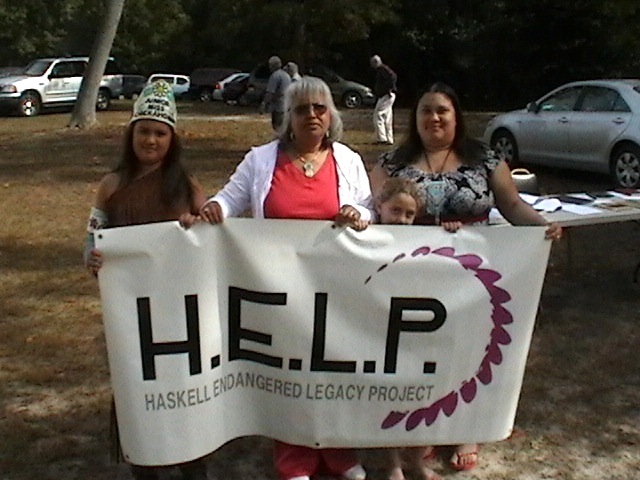
Members of the Chickahominy Tribe in Virginia support the Haskell Endangered Legacy Project. Photo from HELP
Cedric Sunray discusses the flow of Indian students from tribes in the South and East to schools like Haskell University in Kansas and Bacone College in Oklahoma:
Eleanor Cook rolled out of bed, nervous, but excited about what the future held that day. Shunned from attendance at the local white and black schools of rural Virginia, state officials and Bureau of Indian Affairs representatives had for years been informing tribal members about eight of the state’s tribal communities where they would be sent to get accredited high school educations in Bacone, Oklahoma, Cherokee, North Carolina, Hampton, Virginia, and Haskell, Kansas. As the pick up pulled away from the Pamunkey reservation she readied herself for a 1,000-mile journey that would begin momentarily from the train station in Richmond, Virginia. The year was 1944. Annawon Adkins knew that she wanted to go beyond the final grade offered by her little Indian school in her Chickahominy community. Eighth grade would not enable her to pursue the many dreams she had developed in her mind over the years. Like Eleanor, she would take the long journey and end up her classmate at Bacone, an all-Indian school, in far off Oklahoma. Four years later in 1949, she would accept her diploma and jump on another train waiting to take her home to her beloved Virginia. This same year would mark the admittance of Pecita Norwood into another boarding school, Haskell, more than 1,000 miles away from her home in Delaware. A member of the Nanticoke tribal community, she too was prohibited from high school education due to the segregation based policies of the day. In Kansas she would attend school with another member of Eleanor Cook’s Pamunkey community, Kenneth Bradby, who had begun there two years earlier. In 1951, Murphy Reed and Carol Johnston, members of a small Indian community in Alabama, now known as the MOWA Band of Choctaw Indians, would also take the journey out west to Bacone in an attempt to free themselves from the “Jim Crowfeather South.” There they would attend school with tribes from throughout the country including North Carolina’s Haliwa-Saponi. Gallasneed Weaver, a fellow tribal member who had previously attended Acadia boarding school with members of the United Houma Nation and Tunica-Biloxi tribes, joined them. All were intent on breaking the chain of poverty and prejudice, which had enveloped their home environs.Get the Story:
Cedric Sunray: Indian Country Influenced by Attitudes From the Old South (Indian Country Today 2/11)
Join the Conversation